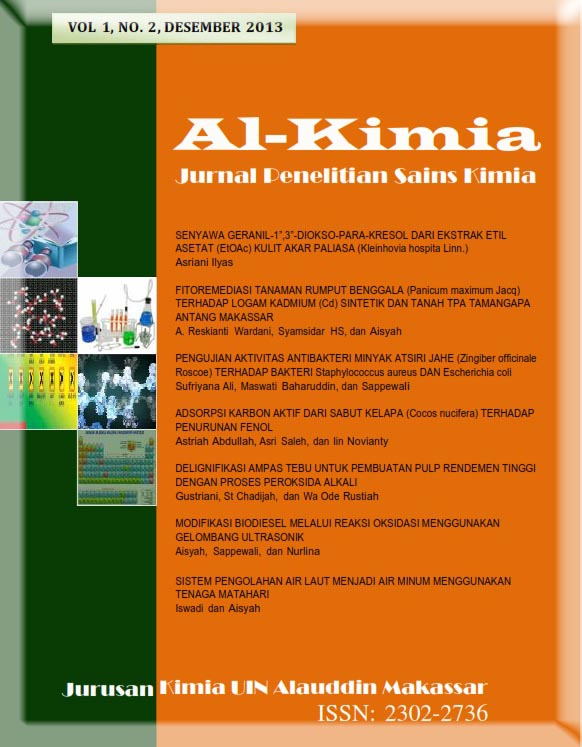Delignifikasi Ampas Tebu untuk Pembuatan Pulp Rendemen Tinggi dengan Proses Peroksida Alkali
Abstrak
Delignification is of lignin termination process with particular solvent that produce high yield the pulping. Alkaline peroxide process produces low kappa pulp. Bagasse contains 42-53% cellulose was used as a base material for pulping. Delignification of bagasse making of high yield pulp by the process of Peroxide Alkali has been done by varying the concentration of NaOH (4%, 5%, 6%, 7%, 8%) and length of cooking 1,5 hours in the temperature 121 °C and pressure 0,11 atm. The aim of the study is to obtain the optimum length of cooking the making of high yield of bagasse by process Peroxide Alkali. The method of the study is delignification with process of cooking using autoclave. The result of the study indicates that addition of concentration NaOH affects the pulp yield, number of permanganate and physical characteristic of papers sheet. The highest yield pulp obtained is 53,97% observed at the concentration of NaOH 5%. Whereas, the lowest number of permanganate is 3, 98 obtained by adding the concentration of NaOH 8%.##plugins.generic.usageStats.downloads##
Referensi
Chadijah, S., 2011, Kinetika Delignifikasi Sabut Kelapa dengan Proses Peroksida Alkali pada Pembuatan Pulp, Jurnal Teknosains, 5 (2) : 223-231.
Chadijah. S., 2010, Delignifikasi Tandan Kosong Kelapa Sawit Untuk Pembuatan Pulp Rendamen Tinggi dengan Proses Peroksida Alkali, Paradigma, Majalah Ilmiah dan Sains Matematika, 5 (2): 167-176.
Fitria, 2008, Pengolahan Biomassa Berlignoselulosa Secara Enzimatis dalam Pembuatan Pulp, Jurnal Teknologi Pertanian, 9 (2) : 70-74.
Yosphine, A., et. al., 2012, Pemanfaatan Ampas Tebu dan Kulit Pisang dalam Pembuatan Kertas Serat Campuran, Jurnal Teknik Kimia Indonesia, 11 (3) : 94-100.
Authors who publish with this journal agree to the following terms:
1) Authors retain copyright and grant the journal right of first publication with the work simultaneously licensed under a Creative Commons Attribution License that allows others to share the work with an acknowledgement of the work's authorship and initial publication in this journal.
2) Authors are able to enter into separate, additional contractual arrangements for the non-exclusive distribution of the journal's published version of the work (e.g., post it to an institutional repository or publish it in a book), with an acknowledgement of its initial publication in this journal.
3)Authors are permitted and encouraged to post their work online (e.g., in institutional repositories or on their website) prior to and during the submission process, as it can lead to productive exchanges, as well as earlier and greater citation of published work (See The Effect of Open Access).


